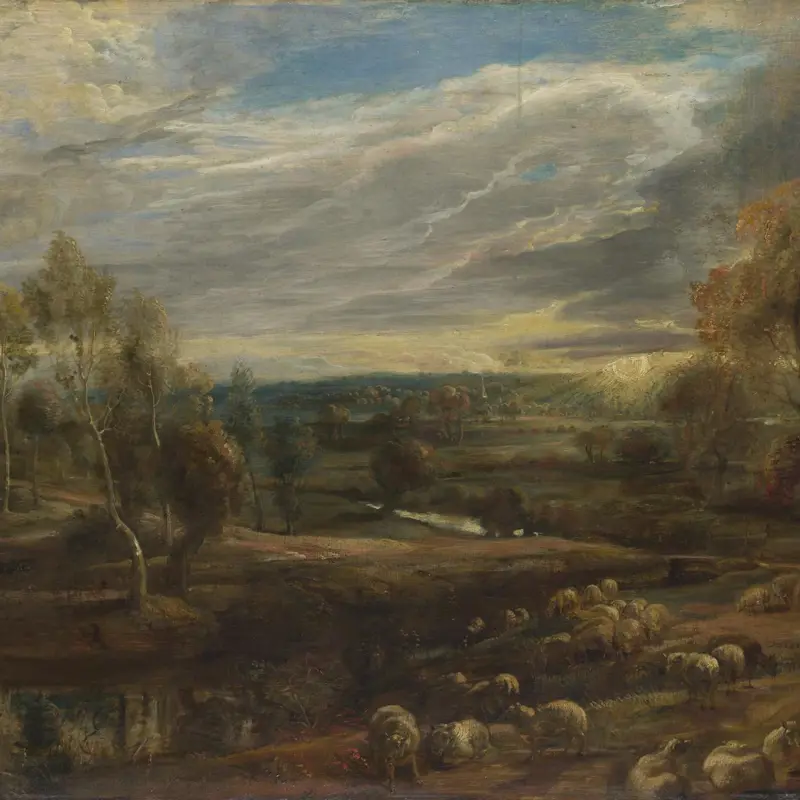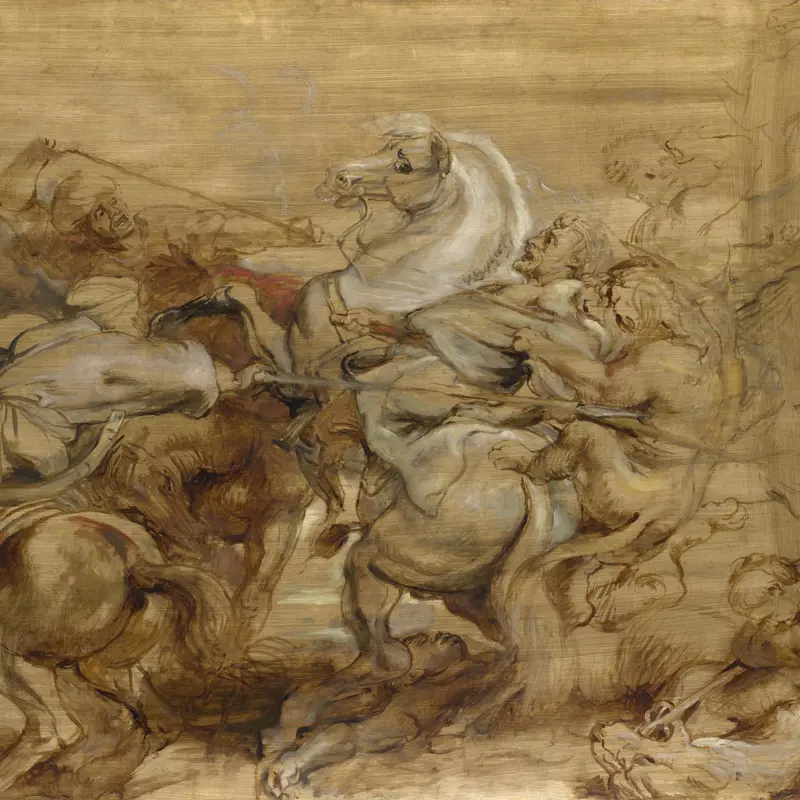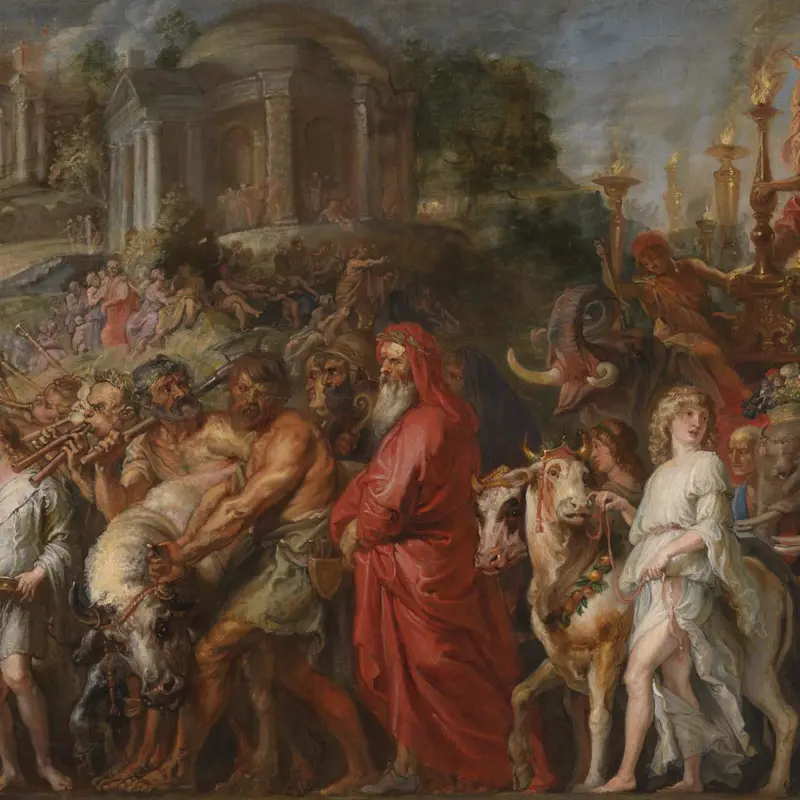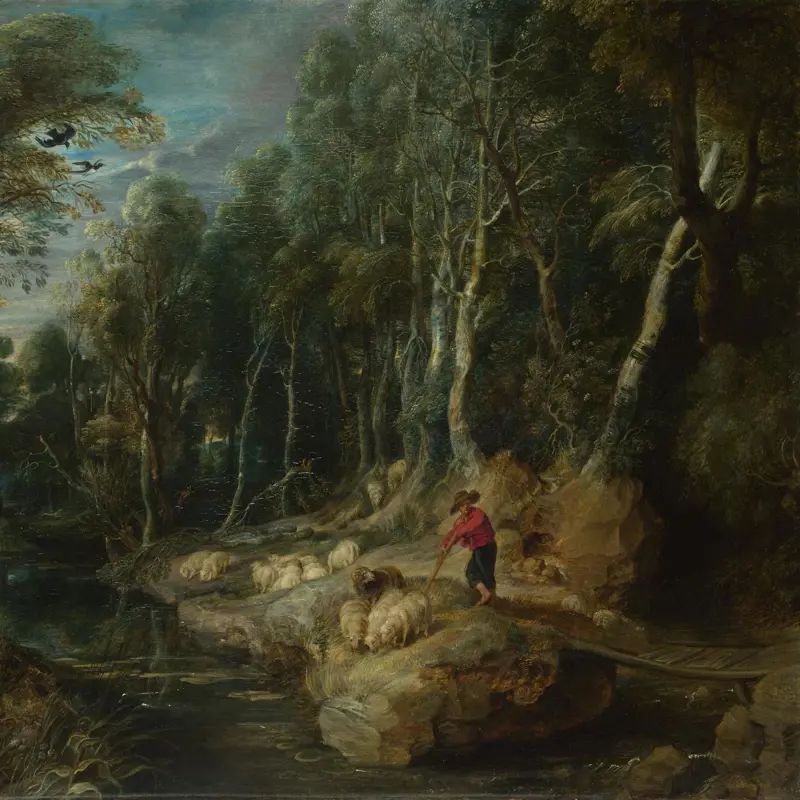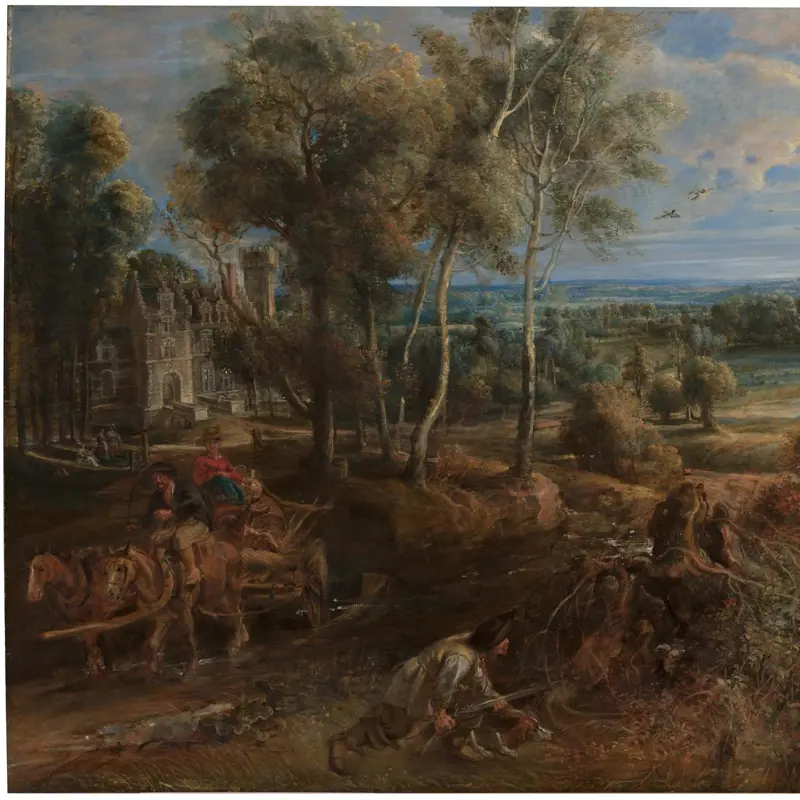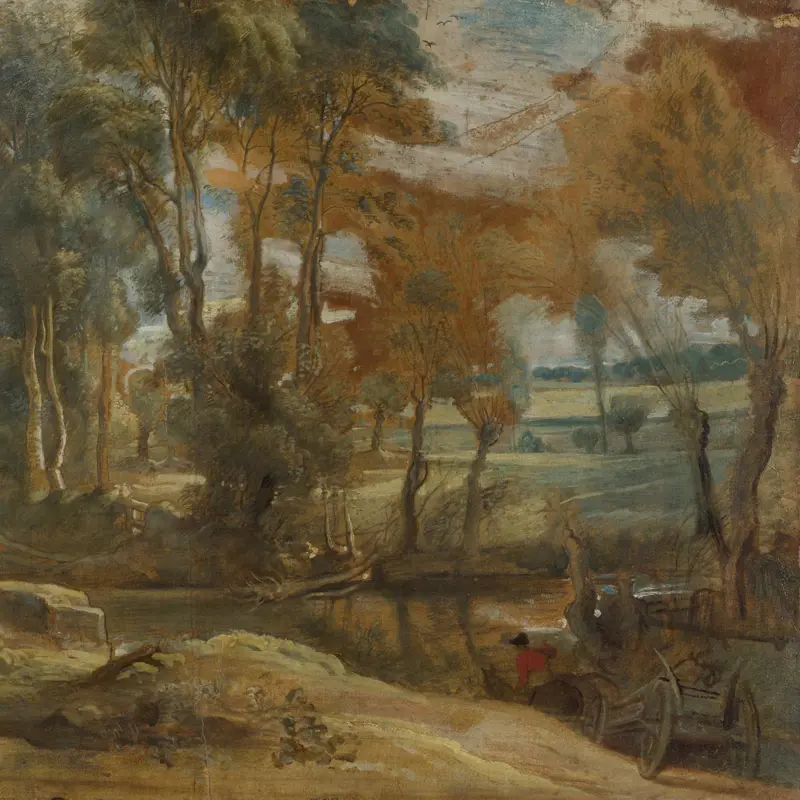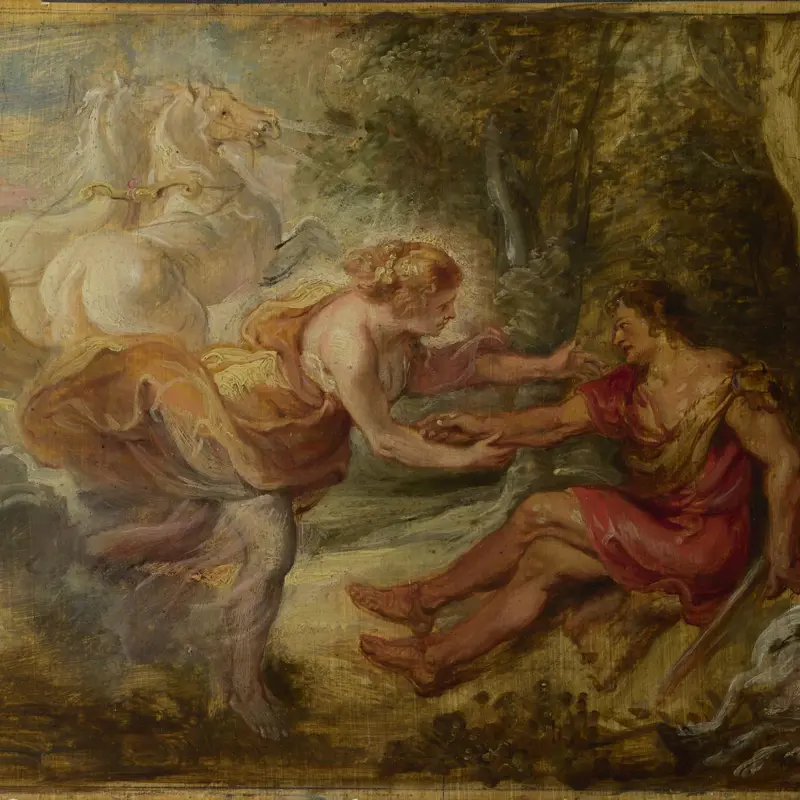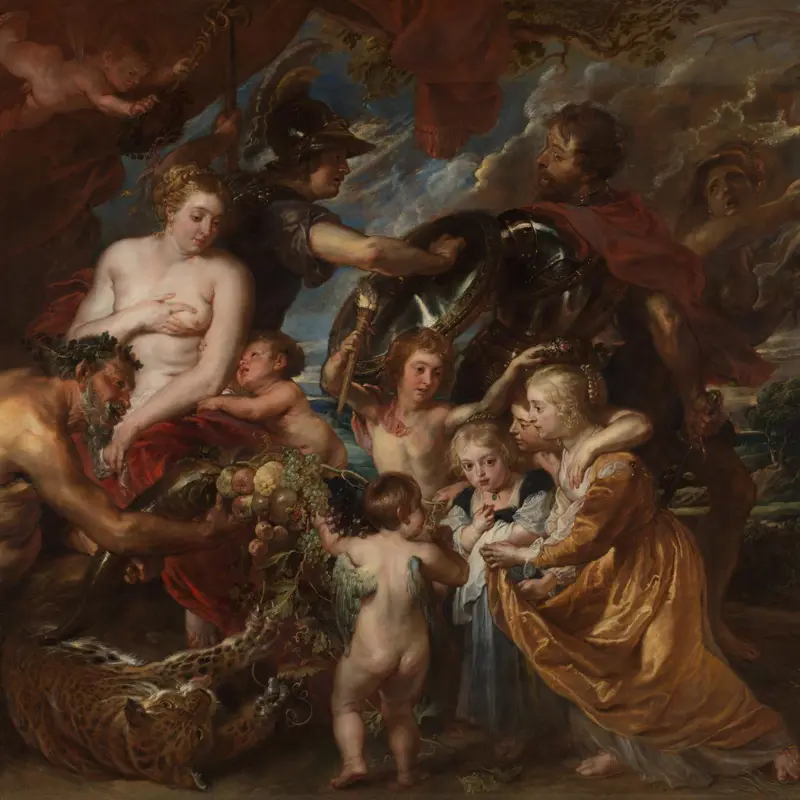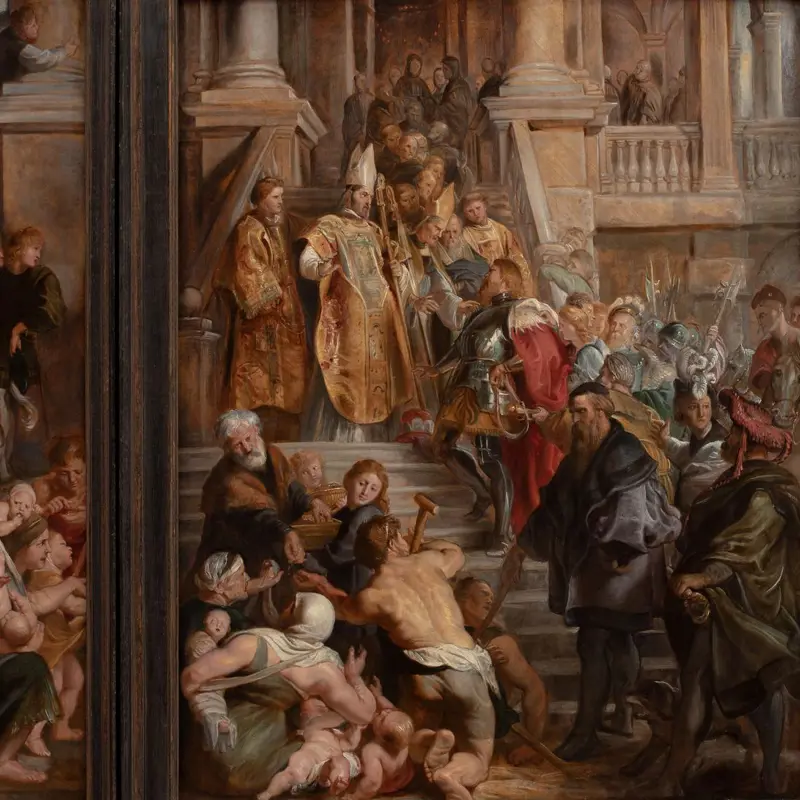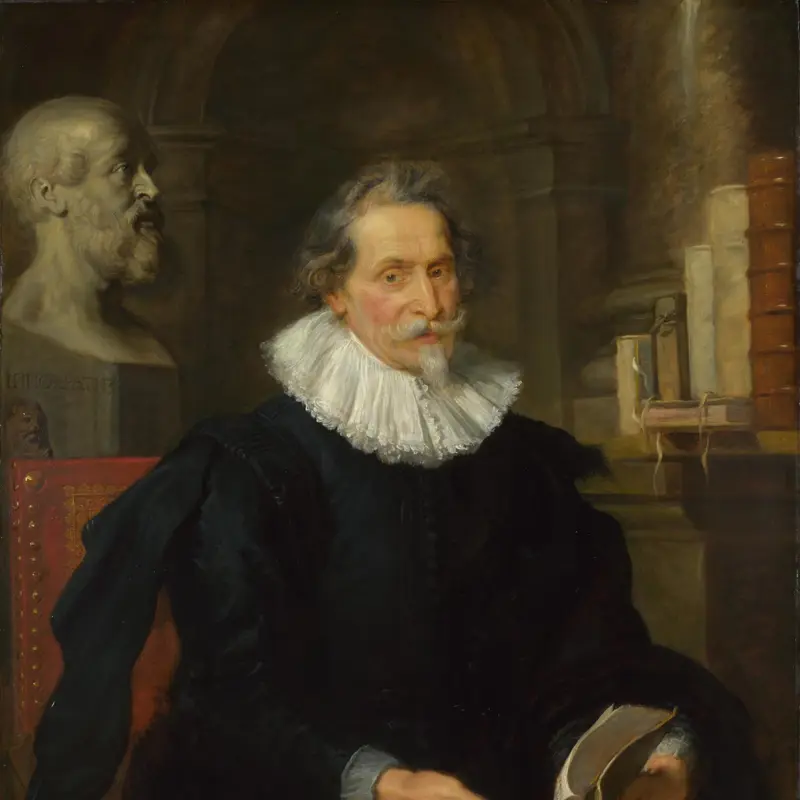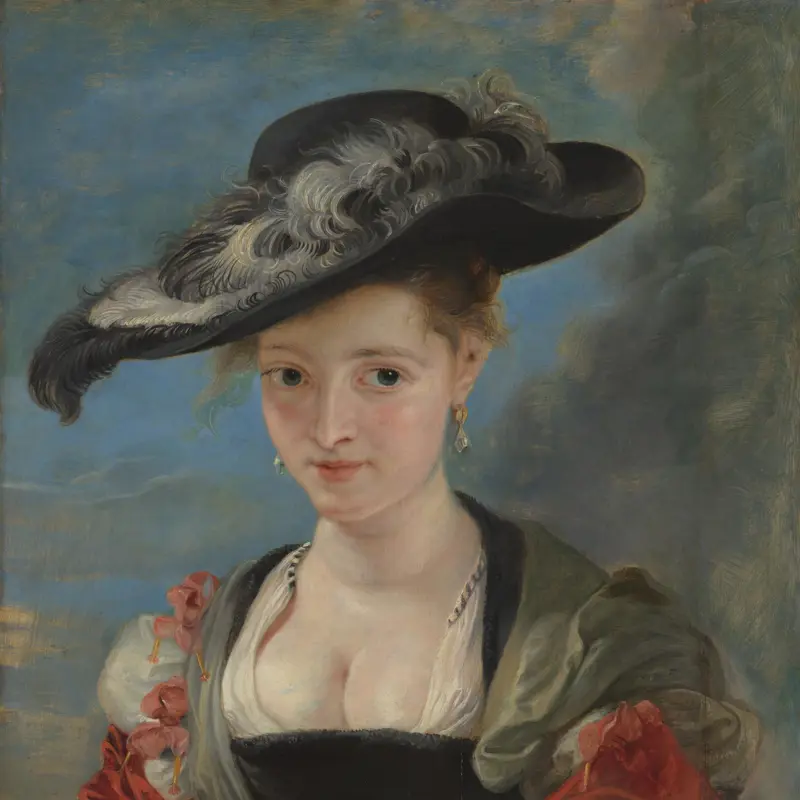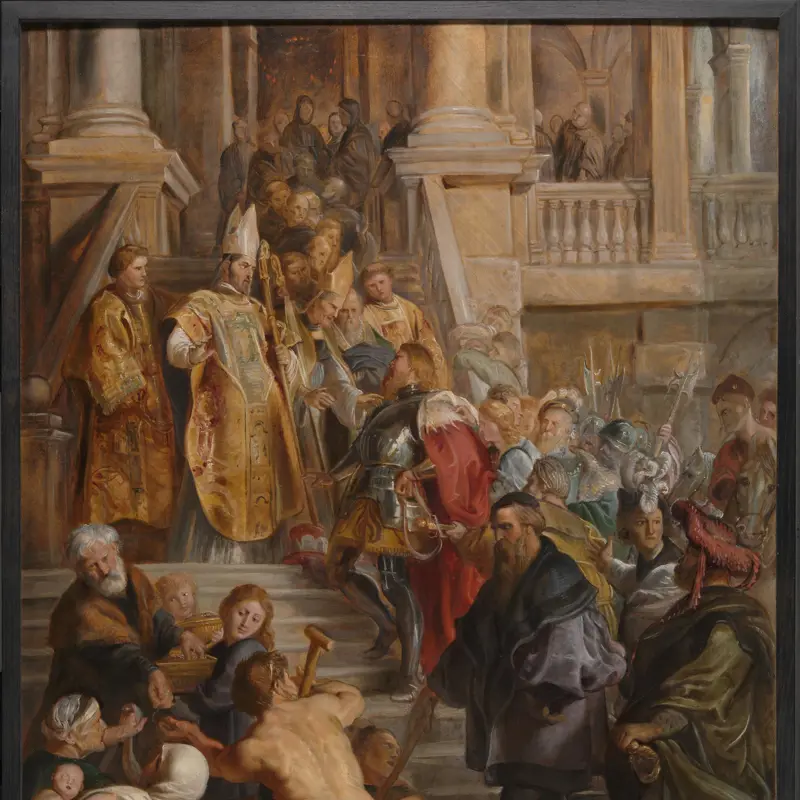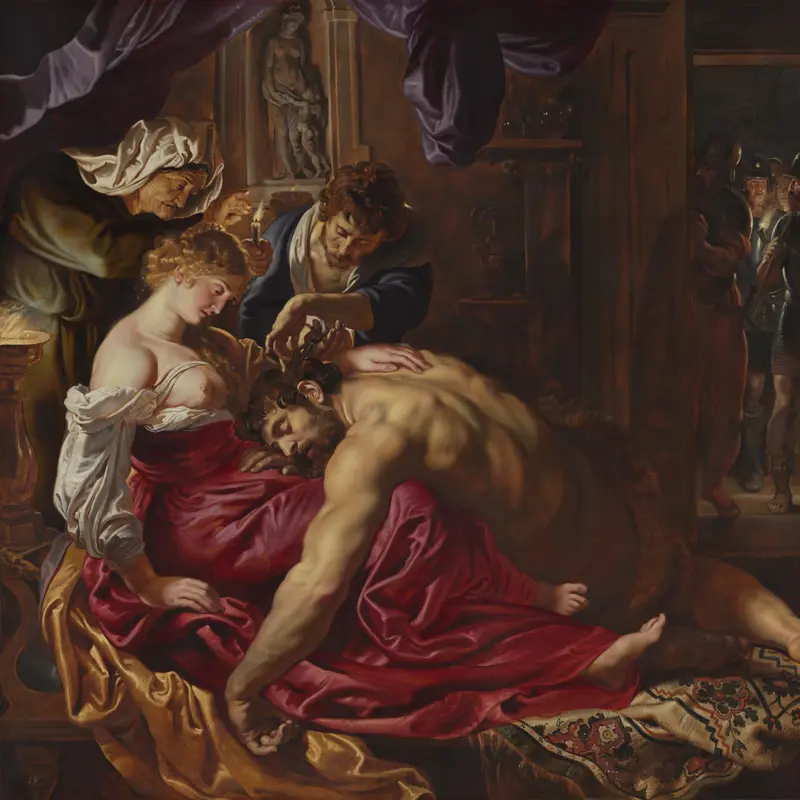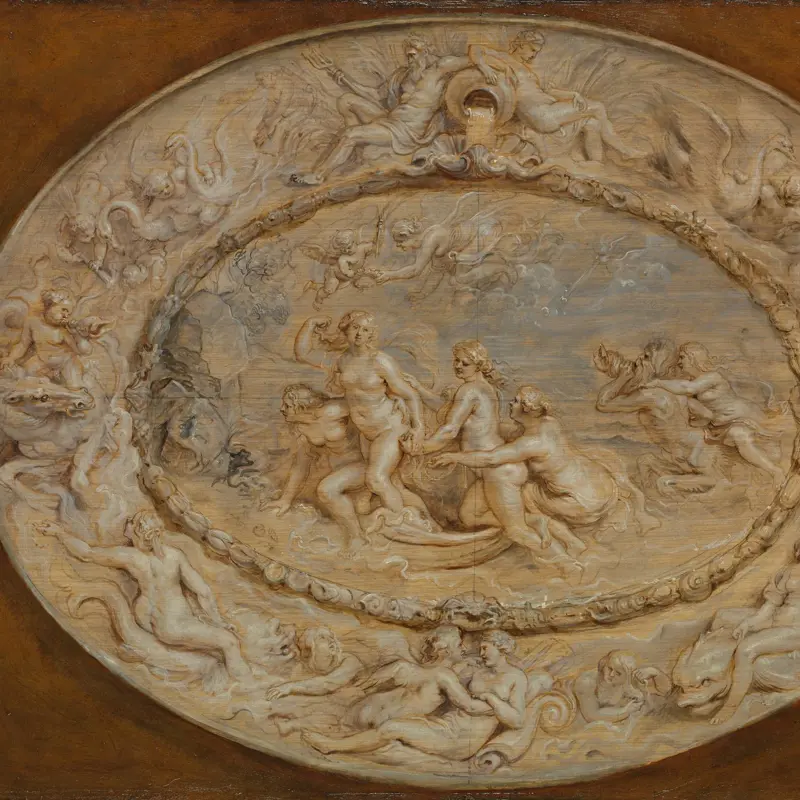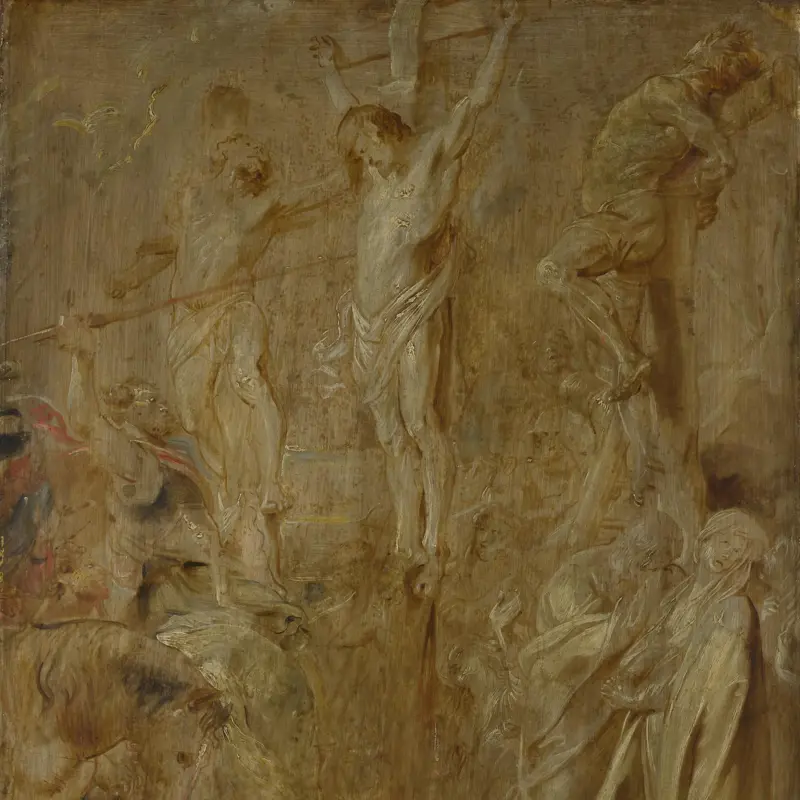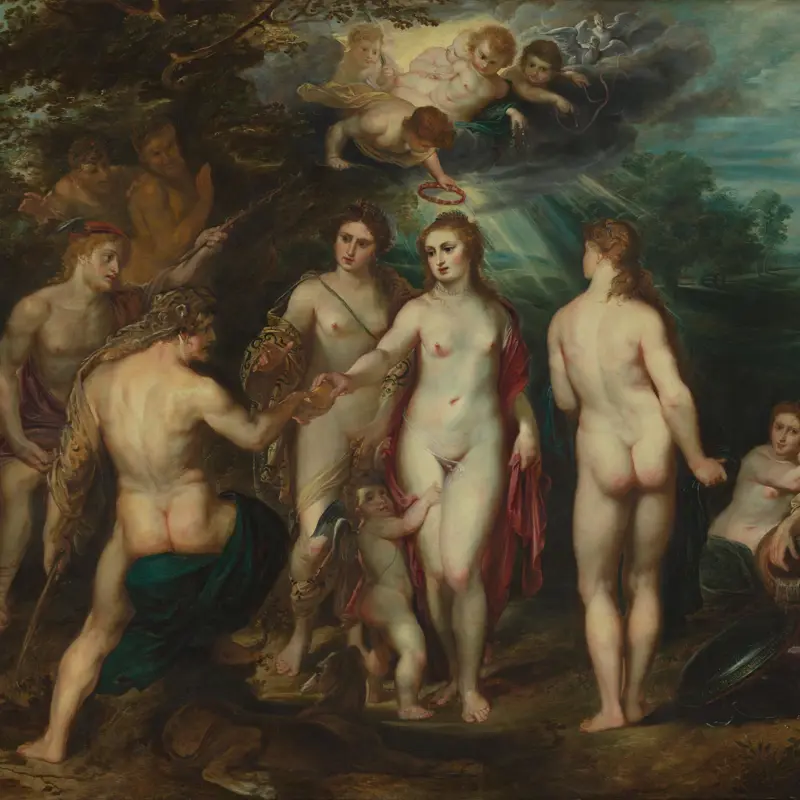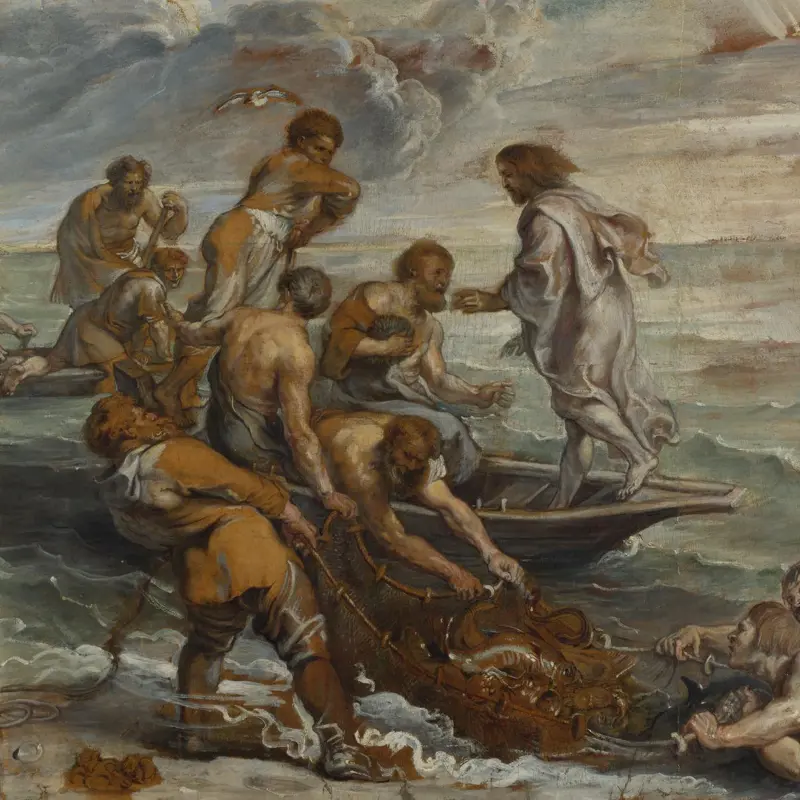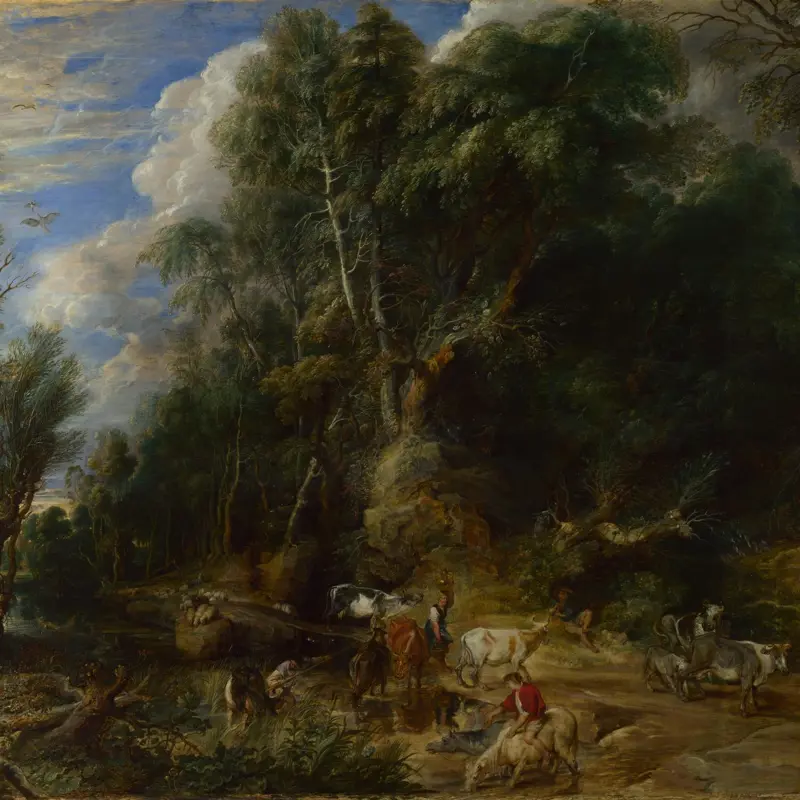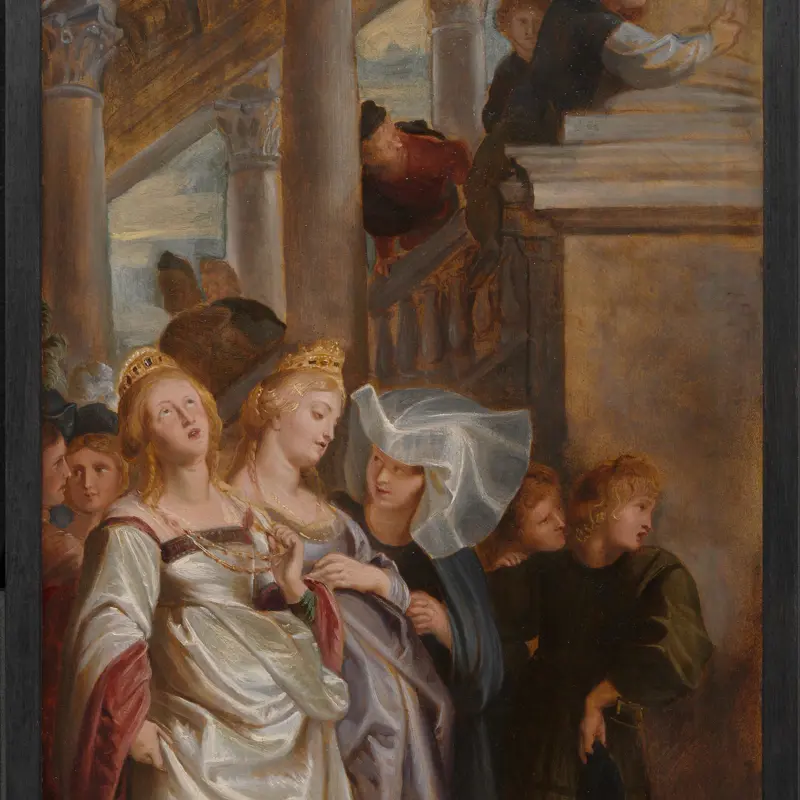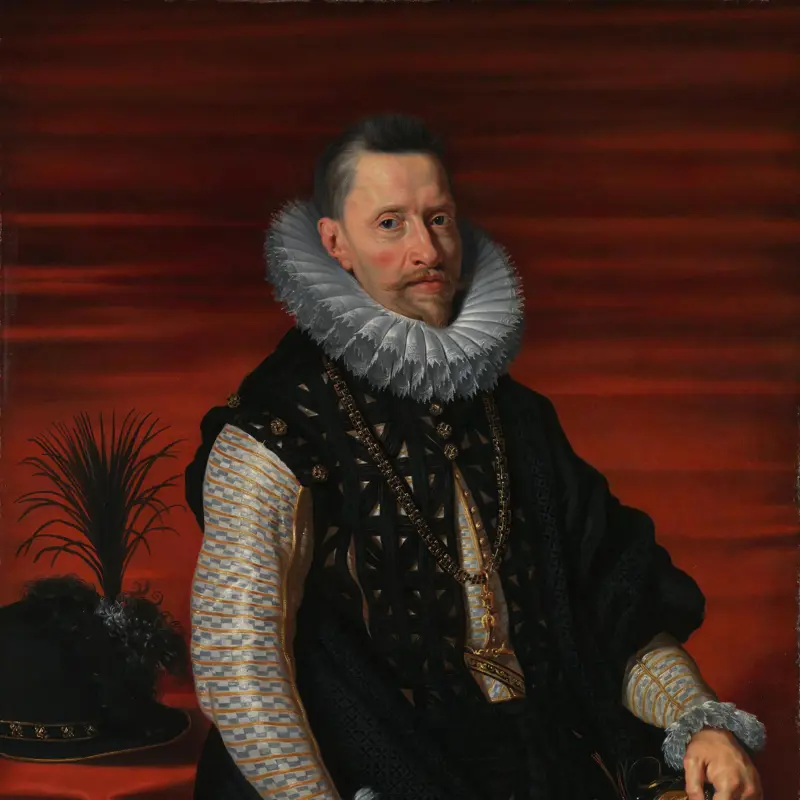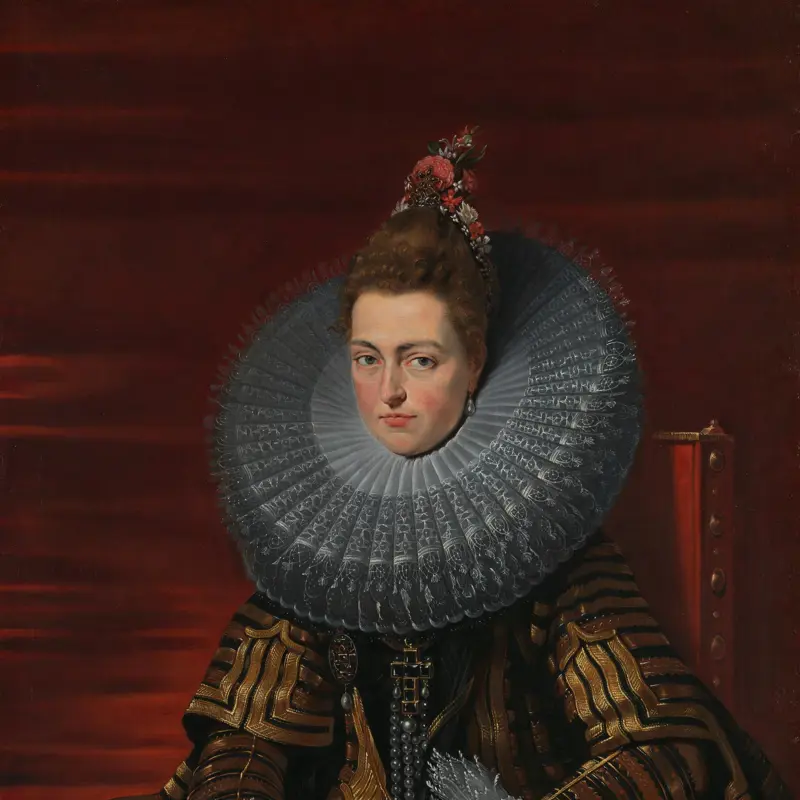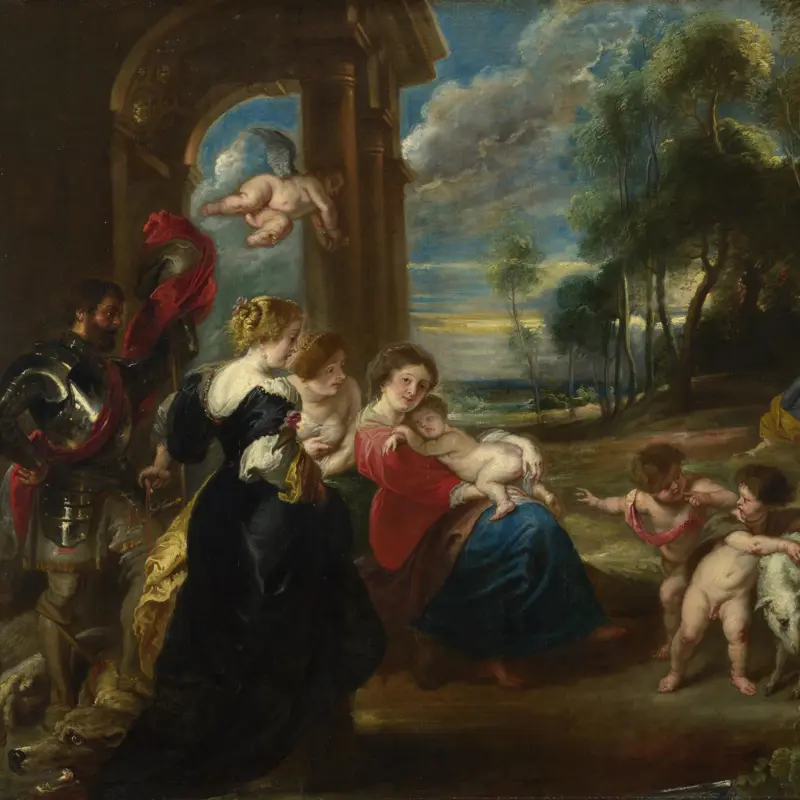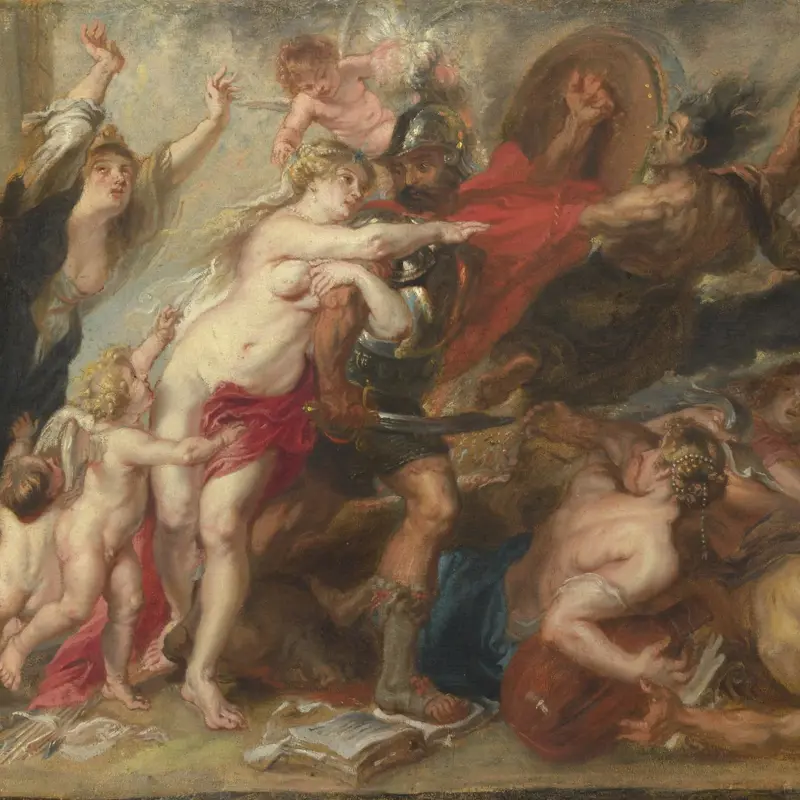Peter Paul Rubens, 'Portrait of Thomas Howard, 2nd Earl of Arundel', 1629-30
About the work
Overview
Thomas Howard (1585–1646), 2nd Earl of Arundel and Surrey, was a prominent political figure and a distinguished patron and connoisseur of the arts. Rubens met him on his visit to England in 1629/30, when Arundel was 44 or 45 years old. This portrait isn’t dated, but may well have been made during this period.
Rubens painted Arundel three times, twice as a man of action, dressed in armour and looking directly at the viewer. Here, however, he has revealed a more intellectual, reflective side to Arundel’s character. He sits rather stiffly, looking away from the viewer with a focused expression. His face, free of shadow, is framed by a white collar, which contrasts strongly with his dark coat and the gloomy background. The medallion which hangs from the blue ribbon around his neck is the Lesser George, an insignia of the Order of the Garter, the highest order of chivalry.
Key facts
Details
- Full title
- Portrait of Thomas Howard, 2nd Earl of Arundel
- Artist
- Peter Paul Rubens
- Artist dates
- 1577 - 1640
- Date made
- 1629-30
- Medium and support
- oil on canvas
- Dimensions
- 67 × 54 cm
- Acquisition credit
- Presented by Rosalind, Countess of Carlisle, 1913
- Inventory number
- NG2968
- Location
- Room 18
- Collection
- Main Collection
- Frame
- 17th-century Dutch Frame
Provenance
Additional information
Text extracted from the ‘Provenance’ section of the catalogue entry in Gregory Martin, ‘National Gallery Catalogues: The Flemish School: circa 1600–circa 1900’, London 1986; for further information, see the full catalogue entry.
Exhibition history
-
2013Rubens et l'EuropeMusée du Louvre-Lens22 May 2013 - 23 September 2013
-
2017Rubens and RembrandtThe National Gallery (London)22 March 2017 - 6 August 2017
Bibliography
-
1754
Langford, A Catalogue of the Genuine and Capital Collection of Pictures, By the Most Celebrated Masters, of that Late Great and Learned Physician, Doctor Richard Mead, Deceased; which (by Order of the Executors) Will Be Sold by Auction, by Mr. Langford, At his House in the Great Piazza, Covent-Garden, On Wednesday, Thursday, and Friday, the 20th, 21st, and 22d of this Instant March 1754, London 1754
-
1785R.J. Sullivan, A Tour through Parts of England, Scotland and Wales, in 1778. In a Series of Letters, 2 vols, 2nd edn, London 1785
-
1824British Institution, Pictures of the Italian, Spanish, Flemish, Dutch and English Schools: With Which the Proprietors Have Favoured the Institution (exh. cat., British Institution, London) London 1824
-
1829
J. Smith, A Catalogue Raisonné of the Works of the Most Eminent Dutch, Flemish, and French Painters: In Which is Included a Short Biographical Notice of the Artists, with a Copious Description of Their Principal Pictures […], 9 vols, London 1829-1842
-
1857G.F. Waagen, Treasures of Art in Great Britain: Being and Account of the Chief Collections of Paintings, Drawings, Sculptures, Illuminated Mss. […], translated from German by Elizabeth Eastlake, 3 vols, London 1857, vol. 3
-
1886M. Rooses, L'œuvre de P. P. Rubens: Histoire et description de ses tableaux et dessins, 5 vols, Antwerp 1886-92
-
1899The New Gallery, Pictures by Masters of the Flemish and British Schools Including a Selection from the Works of Sir Peter Paul Rubens (exh. cat., The New Gallery, London), London 1899
-
1927P. Toynbee, 'Horace Walpole’s Journals of Visits to Country seats, &c.', The Walpole Society, vol. 16, 1927-28, pp. 9-80
-
1955The Diary of John Evelyn, ed. E.S. de Beer, 6 vols, Oxford 1955, vol. 5
-
1963D. Piper, Catalogue of Seventeenth Century Portraits in the National Portrait Gallery, 1625-1714, Cambridge 1963
-
1971E. Duverger, 'De verzameling schilderijen van de Antwerpse zijde- en tapijthandelaar Peter van Hecke de Jonge, schoonbroer van P.P. Rubens, naar een inventaris van 1646', Jaarboek Koninklijk Museum voor Schone Kunsten Antwerpen, 1971, pp. 143-73
-
1973M. Jaffé, [Review] 'National Gallery Catalogues: The Flemish School ca. 1600-ca. 1900 by Gregory Martin; Flemish Paintings and Drawings at 56 Princes Gate London, Addenda by Antoine Seilern', Art Bulletin, vol. 55, no. 3 (Sep.), 1973, pp. 462-4
-
1974P. Hendy, European and American Paintings in the Isabella Stewart Gardner Museum, Boston 1974
-
1977F. Huemer, Portraits I, Corpus Rubenianum Ludwig Burchard 19, Brussels 1977
-
1985D. Howarth, Lord Arundel and his Circle, New Haven 1985
-
1985Thomas Howard, Earl of Arundel: Patronage and Collecting in the Seventeenth Century (exh. cat., The Ashmolean Museum of Art and Archaeology, Oxford), Oxford 1985
-
1986Martin, Gregory, National Gallery Catalogues: The Flemish School, circa 1600 - circa 1900, London 1986
-
1987C. Brown, The National Gallery Schools of Painting: Flemish Paintings, London 1987
-
1989M. Jaffé, Rubens: Catalogo completo, Milan 1989
-
1989J.M. Muller, Rubens: The Artist as Collector, Princeton 1989
-
1992D. Jaffé et al., Esso presents Rubens and the Italian Renaissance (exh. cat., The Australian National Gallery, Canberra; National Gallery of Victoria, Melbourne), Canberra 1992
-
1995D. Jaffé, The Earl and Countess of Arundel: Renaissance Collectors (exh. cat., J. Paul Getty Museum, Malibu), London 1995
-
1995C. White, 'Rubens' portrait drawing of Thomas Howard, the second Earl of Arundel’, Burlington Magazine, vol. 137, no. 1106 (May), 1995, pp. 316-9
-
2001
C. Baker and T. Henry, The National Gallery: Complete Illustrated Catalogue, London 2001
-
2001E. Chaney and G. Worsdale, The Stuart Portrait: Status and Legacy (exh. cat., Southampton Art Gallery), Southampton 2001
-
2004A. Brejon de Lavergnée, Rubens (exh. cat., Palais des Beaux-Arts, Lille), Paris 2004
-
2004F. Donovan, Rubens and England, New Haven 2004
-
2005A.-M. Logan, with M.C. Plomp, Peter Paul Rubens: The Drawings (exh. cat., The Metropolitan Museum of Art, New York), New Haven 2005
-
2011G. Martin, Rubens in London: Art and Diplomacy, London 2011
-
2013B. Ducos et al., L'Europe de Rubens (exh. cat., Musée du Louvre-Lens, Lens), Paris 2013
About this record
If you know more about this work or have spotted an error, please contact us. Please note that exhibition histories are listed from 2009 onwards. Bibliographies may not be complete; more comprehensive information is available in the National Gallery Library.

